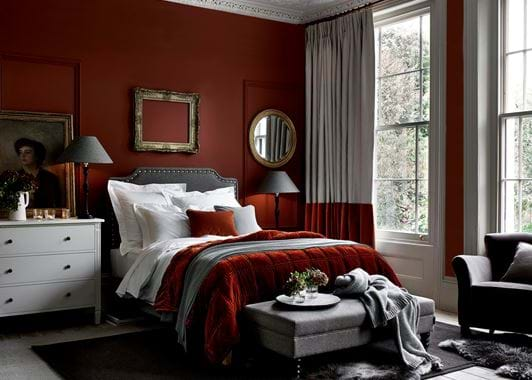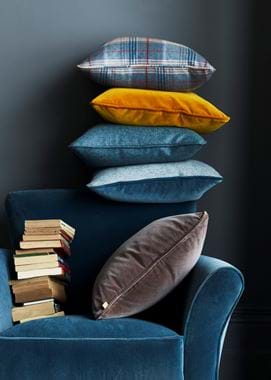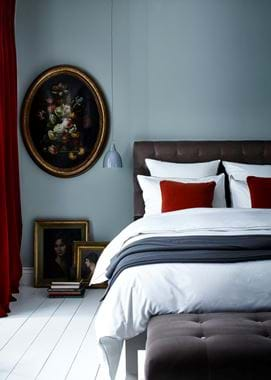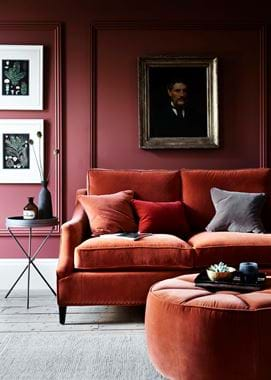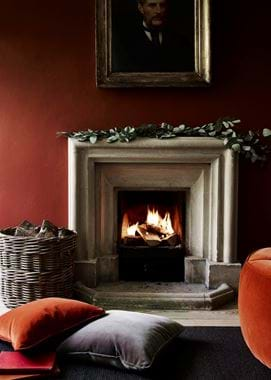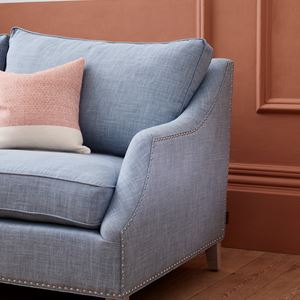Velvet – a step back in time
Velvet – a step back in time
At once refined and comforting, velvet is one of our favourite fabrics for winter – whether you’re curling up in a velvet-upholstered armchair or simply layering up with a few touchably soft cushions. Here, we explore the history of this beautiful textile…
Velvet’s opulent texture alone is enough to make it feel luxurious, but it’s not the only reason why this fabric is so admired. Every time we touch a piece of velvet, we sense the time and skill that has gone into its making – and appreciate the high status it has had for centuries. In fact, our love of velvet goes all the way back to ancient Egypt and China. Examples of silk velvet from these countries have been found that date from 2,000BC, made by hand using time-consuming methods that ensured only the wealthiest nobles could afford them. Via trade in exotic goods on the Silk Road, velvet made its way to medieval Europe. The first mention of the word, used to describe a fabric with a dense pile, appeared around the 14th century.
Medieval textile artisans, notably in Venice, Genoa and the French city of Lyon, produced endless different types of velvet that were used for everything from religious robes to curtains and, in the most extravagant cases, wall coverings. Some of the terms once used to describe these prized fabrics are still current today: they include devoré (where acid is used to etch a pattern into the velvet by removing sections of the pile, typically to create a pattern such as fleur de lys or damask), panne (a textile with a flattened, sheeny pile, almost like satin and resembling crushed velvet) and nacré (an iridescent effect – in French, it means ‘pearly’ – created by weaving two or more colours into the velvet, so that they catch the light).
This golden era of European textile art led to a widespread reverence for velvet. During the Renaissance, it was coveted almost like real gold: Elizabeth I was painted wearing a red velvet gown, as were subjects by Leonardo da Vinci and Raphael. Sumptuary laws – which decreed that only the wealthy could buy luxury goods and wear certain rich colours – ensured that velvet retained its value. Only the most expensive, jewel-bright dyes were used to colour it, so it appeared more precious still. Henry VIII, always a lavish consumer of expensive fabrics, filled Hampton Court Palace with opulent velvets and silks that glowed by candlelight; there were even fashionable velvet furnishings in the King’s private bathroom.
In the 19th century, the Industrial Revolution finally made it possible for velvet to be manufactured using machine methods, rather than laboriously made by hand. New mechanical looms wove two lengths of fabric at once, which were then cut apart to create the distinctive pile. Surprisingly, making velvet more accessible didn’t diminish its appeal: it was favoured by bohemian celebrities such as Oscar Wilde and actress Sarah Bernhardt, who was photographed for her stage debut wrapped in swathes of velvet.
Today, there is once again a huge trend for velvet in fashion and interiors; it fits perfectly with our renewed desire for refined materials that feel as good as they look. Where once velvet was only made of costly silk, though, it’s now as likely to be woven from cotton or even polyester, which makes it a more hard-wearing, practical choice for everyday living. And while it now comes in more understated shades than in Renaissance Venice, the fabric has lost none of its lustre or magic. Velvet is here to stay.

